This article was medically reviewed by Luba Lee, FNP-BC, MS and by wikiHow staff writer, Dev Murphy. Luba Lee, FNP-BC is a Board-Certified Family Nurse Practitioner (FNP) and educator in Tennessee with over a decade of clinical experience. Luba has certifications in Pediatric Advanced Life Support (PALS), Emergency Medicine, Advanced Cardiac Life Support (ACLS), Team Building, and Critical Care Nursing. She received her Master of Science in Nursing (MSN) from the University of Tennessee in 2006.
There are 12 references cited in this article, which can be found at the bottom of the page.
wikiHow marks an article as reader-approved once it receives enough positive feedback. In this case, several readers have written to tell us that this article was helpful to them, earning it our reader-approved status.
This article has been viewed 380,165 times.
You may need an enema if you deal with frequent constipation or to treat bowel conditions, help detoxify, or prep for bowel surgery. If you've talked with your doctor and decided that an enema would help you, you can safely mix a homemade solution that will help you comfortably pass stool. All you need to make a DIY enema is table salt, warm water, and clean supplies. Check out our at-home enema recipe below!
Things You Should Know
- Mix 4 cups (0.95 L) of warm water with 2 teaspoons (11 g) of table salt. Combine the mixture with a doctor-recommended amount of saline solution in an enema bag.
- Use a sterile enema kit to apply the enema, as well as petroleum jelly or anal lubricant.
- Do not use food or other home remedies for your enema, as these ingredients can introduce harmful bacteria to your colon or cause an electrolyte imbalance.
- Only administer the enema with your doctor’s approval. Enemas can be safe to administer at home, but they also carry some health risks.
Ingredients
- 2 teaspoons (11 g) of table salt
- 4 cups (0.95 L) of tap or distilled water
- 2 to 6 teaspoons (9.9 to 29.6 ml) of glycerin, optional
- Prescription medication, if recommended
Makes 4 cups (0.95 L) of saline solution
Steps
Mixing a Saline Solution Enema
-
1Pour 4 cups (0.95 L) of warm water into a large clean bottle. Find a sterile bottle that's large enough to hold the water and pour 4 cups (0.95 L) of warm tap water directly into it.[1]
- To sterilize the bottle, boil it in water for 5 minutes or run it through your dishwasher on the hottest setting.
- Although tap water is safe to use, you can also use distilled water.
- Make sure the water is comfortably warm, somewhere between 98 and 104 °F (37 and 40 °C).
-
2Add 2 teaspoons (11 g) of table salt to the bottle. Use a measuring spoon to drop the table salt right into the bottle with the warm water. It's important not to eyeball the amount of salt or the solution might not be the correct strength.[2]
Warning: Never prepare a saline solution enema using Epsom salts. This can cause an extreme magnesium imbalance in your body which can be fatal.
Advertisement -
3Seal the bottle shut and shake it until the salt dissolves. Ensure the cap is screwed on tightly so no water leaks and vigorously shake the bottle until you see the salt dissolve in the water. This will take around 30 seconds.[3]
- The saline solution will be clear since there's very little salt in comparison to the water.
-
4Pour the recommended amount of warm saline into the enema bag. Ask your doctor how much saline solution to use. Adults, in general, will need to pour 2 cups (470 ml) of the solution into the bag.[4]
- For kids between the ages of 6 and 12, use 1 1⁄2 cups (350 ml) of saline solution; for children between the ages of 2 and 6, use 3⁄4 cup (180 ml).
Variation: Instead of using a saline solution, you could use a bottle of pure mineral oil, which will soften the stool and lubricate your colon. Purchase a 4.5 fl oz (130 ml) bottle or pour that amount into the enema bag. If the enema is for a kid between 2 and 6 years old, use half that amount.
-
5Put glycerin or prescription medication into the bag, if doctor-recommended. For an extra laxative effect, your doctor might recommend adding 2 to 6 teaspoons (9.9 to 29.6 ml) of glycerin or prescription medication to treat bowel conditions, such as inflammatory bowel disease or ulcerative colitis.
- Follow your doctor's prescription when adding these medications to an enema. You may need to hold them longer or take them at specific times of the day.
Administering an Enema Safely
-
1Get your doctor's consent before having an enema. There are several reasons why your doctor might recommend an enema. They can help if you're experiencing severe constipation because they can stimulate your bowels to pass stool. Your doctor might also prescribe an enema if you're going to have bowel surgery.[5]
- If you're having bowel surgery, you'll usually need to do the enema around 2 hours before the procedure.
-
2Ask your doctor to recommend a dose and frequency. If your doctor thinks you'd benefit from doing an enema at home, ask them to prescribe a specific type. Also ask how much liquid to use and how often to perform the enema.
- It's important to closely follow your prescription because frequent enemas can damage your colon or lead to dependence on enemas.
-
3Use a sterile enema kit to prevent infection. It's important to use sterile tools for each enema. You can purchase a kit that contains a sterile enema bag and tubing with a nozzle. Depending on the kit, it may also include a lubricant.[6]
- You can buy enema kits at pharmacies, medical supply stores, or online.
-
4Administer the enema. Hang the enema bag on a hook about 12–18 in (30–46 cm) above your rectum or have someone hold it at this level for you. Positioning the enema bag this way will allow the fluid to flow freely.[7] Rub the skin around your anus and the nozzle of the enema tube with anal lubricant or petroleum jelly. Lie on your side and bring your legs up towards your chest. Then, insert the nozzle into your anus until it's about 3 inches (7.6 cm) deep and release the clamp that's on the tube. The solution will start to flow into your bowels.[8]
- If you're having trouble inserting the nozzle, try bearing down while you do it.
-
5Hold the saline enema in for up to 15 minutes. Stay in the same position and wait for at least 5 minutes. Once the enema begins to work, you will likely start to feel the urge to pass stool. Try to relax and breathe slowly if you feel cramps in your abdomen.[9]
- If you added glycerin to the solution, you may need to hold the enema for up to 60 minutes.
-
6Expel the enema and stool into the toilet. When you feel ready for a bowel movement, go to the restroom and sit on the toilet. It may take some time to expel the enema and pass stool, so don't worry if you're sitting for a while before you have a movement.[10]
- Stay on the toilet until you no longer feel an urge to defecate.
-
7Recognize the risks of using enemas at home. Common side effects of enemas include nausea, vomiting, diarrhea, and cramps or abdominal pain. In rare cases, you might pierce a hole in your colon or cause a severe electrolyte imbalance, which is why you must only perform an enema if your doctor advises you to do it.[11]
- If you don't feel comfortable with the risks of doing an enema at home, ask your doctor if the enema can be done in the hospital.
-
8Avoid using home remedies as enemas since these can damage your colon. You've probably heard of coffee, milk, or vinegar enemas. Unfortunately, these can introduce harmful bacteria to your colon or cause an electrolyte imbalance, making them dangerous to use as enemas. Also avoid making enemas with any of these ingredients:[12]
- Lemon juice
- Alcohol
- Garlic
- Aloe
- Thistle
- Mineral water
- Wild herbs
- Turpentine
Warning: Although you may have seen soap suds enemas, research has shown that it's only safe to use in an extreme, emergency room situation.
Warnings
- It's important not to use food products or home remedies, such as milk, lemon, herbal tea, or coffee, for enemas since these can cause severe health problems.[13]⧼thumbs_response⧽
- Avoid doing a pure water enema since you need the salt to pull water into your bowels. This will soften the stool so you're able to pass it.[14]⧼thumbs_response⧽
Things You'll Need
- Measuring cups and spoons
- Large bottle with a lid
- Enema kit with tubing, enema bag, and nozzle
References
- ↑ https://youtu.be/zLY1WkaXzP0?t=213
- ↑ https://www.ncbi.nlm.nih.gov/pubmed/15759964
- ↑ https://www.childrenscolorado.org/doctors-and-departments/departments/colorectal/colorectal-procedures/enemas-at-home/
- ↑ http://www.med.umich.edu/1libr/PedSurgery/ColorectalProgram/EnemaProgram.pdf
- ↑ https://myhealth.alberta.ca/Health/aftercareinformation/pages/conditions.aspx?hwid=uf9444
- ↑ https://www.ncbi.nlm.nih.gov/pmc/articles/PMC3641812/
- ↑ http://www.med.umich.edu/1libr/MPU/TapWaterEnemaAnoscopy.pdf
- ↑ https://www.nursingtimes.net/nursing-practice/specialisms/gastroenterology/how-to-administer-an-enema/203226.article
- ↑ https://www.mayoclinic.org/tests-procedures/barium-enema/about/pac-20393008
- ↑ https://www.nursingtimes.net/nursing-practice/specialisms/gastroenterology/how-to-administer-an-enema/203226.article
- ↑ https://www.ncbi.nlm.nih.gov/pmc/articles/PMC3641812/
- ↑ https://journals.lww.com/jpgn/Fulltext/2016/07000/Soap_Suds_Enemas_Are_Efficacious_and_Safe_for.6.aspx
- ↑ https://www.ncbi.nlm.nih.gov/pmc/articles/PMC3401717/
- ↑ https://intermountainhealthcare.org/ext/Dcmnt?ncid=521193989
About This Article
Make an enema to help with constipation by mixing 2 tablespoons of extra-virgin olive oil with 1.5 quarts of water in a small saucepan and heating the mixture to 104 °F. Apply the mixture and try to retain it for 5 to 10 minutes. To make the enema more effective, try replacing the water with 1 quart of whole milk and 1/2 a quart of water and prepare it like before. When used, the bacteria in your colon will convert the milk into a gas that will push the enema further up your colon, making the enema more effective. If you want to learn how to make an enema using salt water or lemon juice, keep reading the article!
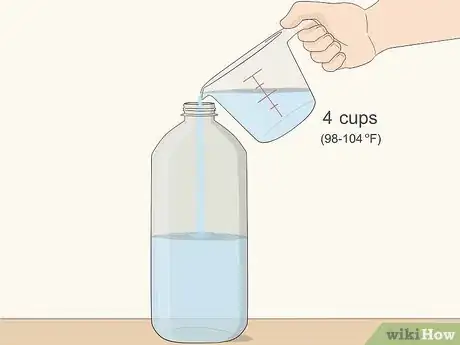
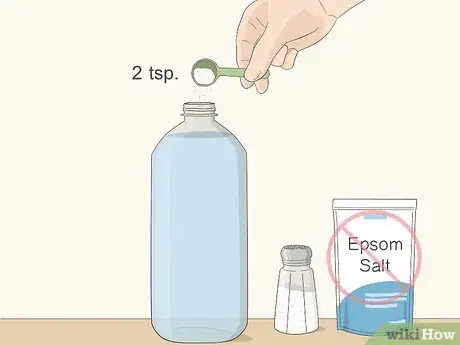
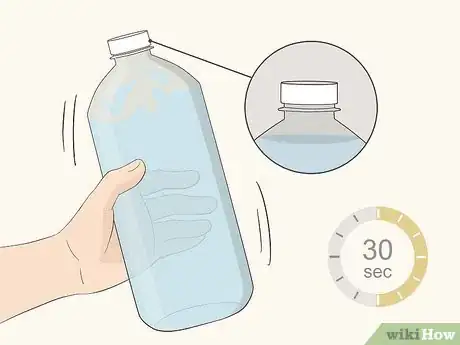



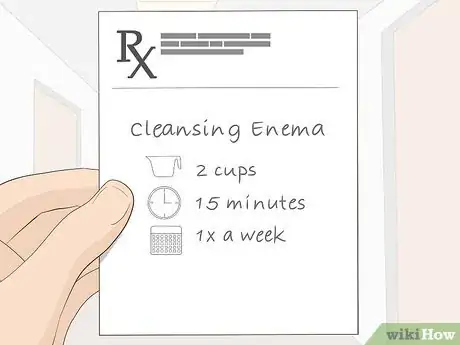
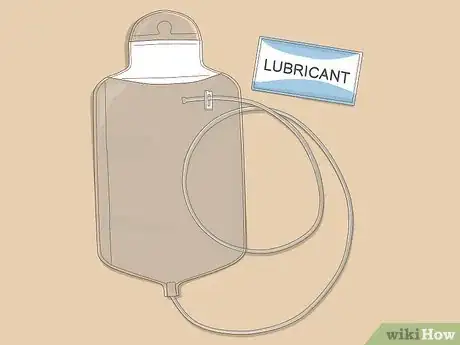

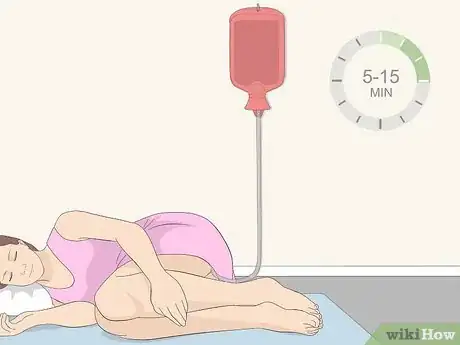
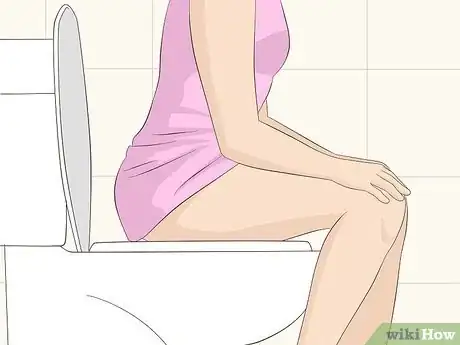

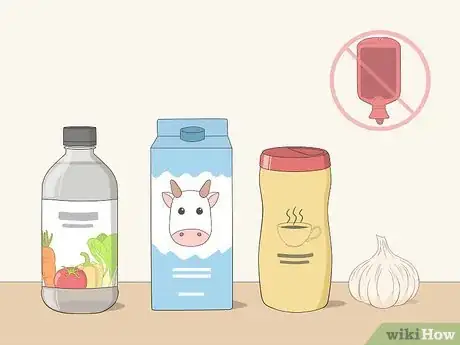
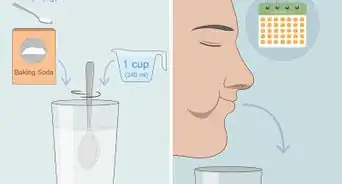








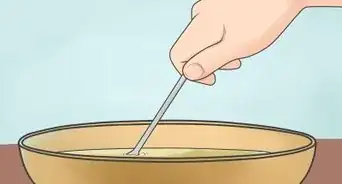

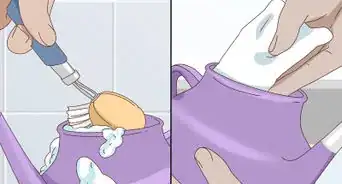











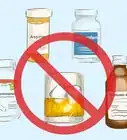




































Medical Disclaimer
The content of this article is not intended to be a substitute for professional medical advice, examination, diagnosis, or treatment. You should always contact your doctor or other qualified healthcare professional before starting, changing, or stopping any kind of health treatment.
Read More...